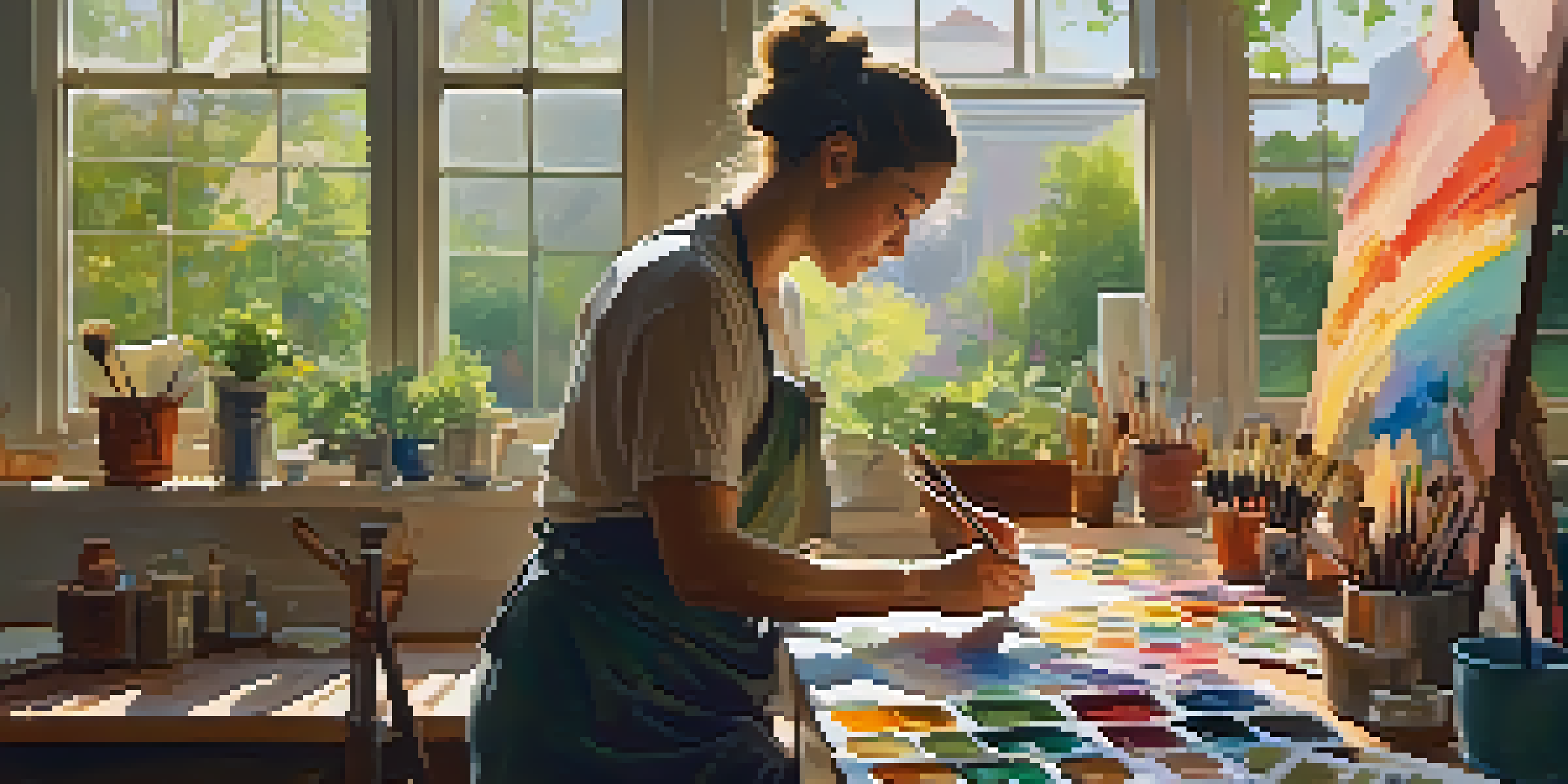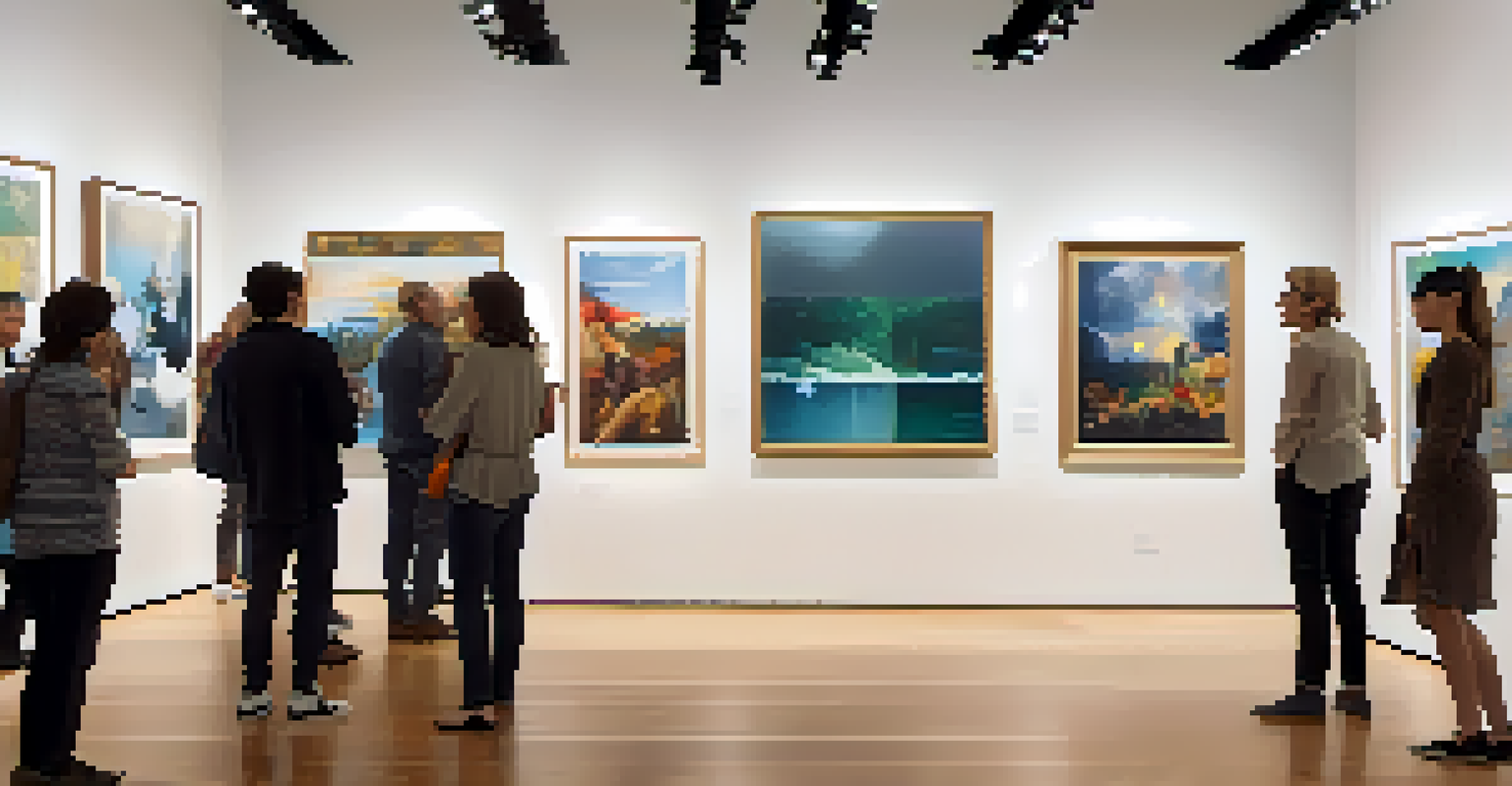Authenticity in Art Criticism: A Philosophical Approach

Understanding Authenticity in Art Criticism
Authenticity in art criticism revolves around the genuine expression of both the artist's intentions and the critic's insights. It raises the question of what it truly means for a piece of art to be authentic and how that authenticity is perceived by different audiences. This complexity is not just about the artwork itself but also about the context in which it is created and critiqued.
Art is the most beautiful of all lies; it is a lie that reveals the truth.
To navigate this topic, we must consider the various dimensions of authenticity, including the historical, cultural, and personal influences that shape an artist's work. These elements contribute significantly to how critics interpret and evaluate art. For instance, a painting created during a tumultuous period might be seen as more authentic due to its raw emotional expression.
Ultimately, understanding authenticity in art criticism requires a balance between objective analysis and subjective experience. Critics must strive to articulate their personal reactions while grounding their evaluations in broader artistic contexts. This interplay helps foster a richer dialogue about art and its meanings.
The Role of the Critic in Art Interpretation
Art critics play a pivotal role in shaping public perception and understanding of art. They serve as intermediaries between the artist's vision and the audience's experience, offering insights that can enhance appreciation and provoke thought. However, the authenticity of their interpretations can be called into question, depending on their biases and backgrounds.

For example, a critic with a strong attachment to a particular art movement might overlook works that challenge those conventions. This selective viewing can lead to a skewed understanding of an artist's true intentions and can dilute the authenticity of the critique. Therefore, it's essential for critics to remain aware of their own perspectives and how these influence their evaluations.
Authenticity Shapes Art Criticism
Understanding authenticity involves balancing the artist's intentions with the critic's insights within various cultural and historical contexts.
Critics must also acknowledge the diversity of interpretations among audiences. Each viewer brings their unique experiences and backgrounds to their understanding of art, which can differ significantly from the critic's analysis. This complexity highlights the importance of fostering an inclusive dialogue that respects various viewpoints while striving for authenticity.
Philosophical Foundations of Authenticity
Philosophically, authenticity can be traced back to existentialist thought, where the essence of being true to oneself is paramount. This principle applies equally to artists who seek to convey their genuine emotions and experiences through their work. In this light, art becomes a reflection of the artist's authentic self, making its critique a search for that same authenticity.
The artist is nothing without the gift, but the gift is nothing without work.
The philosophical debate surrounding authenticity often pits individual expression against societal norms. Some argue that true authenticity can only emerge when artists break free from conventional expectations. Conversely, others believe that adhering to certain styles or traditions can still yield authentic expressions of creativity.
This philosophical exploration encourages a deeper understanding of what it means to create and critique art authentically. By engaging with these foundational ideas, both artists and critics can better navigate the complexities of authenticity in their respective roles.
The Influence of Cultural Context on Authenticity
Cultural context plays a critical role in shaping perceptions of authenticity in art. Different cultures value various artistic expressions, which can influence how both artists and critics understand authenticity. For instance, traditional art forms may be seen as more authentic within certain cultures, while contemporary pieces might struggle for validation.
Moreover, globalization has introduced new challenges to the concept of authenticity. As art flows across borders, the meanings and values attached to specific works can shift dramatically. Critics need to be aware of these cultural nuances and how they impact their interpretations of art from different backgrounds.
Critics Influence Public Perception
Art critics act as intermediaries, but their biases can affect the authenticity of their interpretations and the public's understanding of art.
Understanding the cultural context allows critics to evaluate art more holistically. By recognizing the influences of history, tradition, and societal values, they can foster a more nuanced conversation about authenticity that respects diverse perspectives and experiences.
The Impact of Technology on Art and Criticism
In today’s digital age, technology profoundly impacts both art creation and criticism. Artists are now using digital tools to express their authentic selves in ways that were not possible before. This evolution prompts critics to reconsider what constitutes authenticity in a world where art can be easily manipulated and reproduced.
For instance, the rise of digital art has sparked debates about originality and authenticity. Critics must grapple with questions like, 'Can a digital reproduction hold the same authenticity as a traditional painting?' Such discussions can lead to broader reflections on the nature of art itself.
Technology also enables a wider audience to engage with art criticism. Online platforms allow for diverse voices to contribute to the conversation, enriching the discourse around authenticity. However, this democratization comes with its own challenges, as the quality and depth of critiques can vary widely.
Challenges in Evaluating Authenticity
Evaluating authenticity in art criticism is fraught with challenges that stem from subjective interpretations and external influences. Critics often face pressure to conform to popular opinions or trends, which can compromise their ability to provide authentic evaluations. This struggle highlights the importance of maintaining integrity in critique.
Additionally, the commercialization of art has led to further complexities. When art becomes a commodity, its intrinsic value may be overshadowed by market forces. Critics must navigate this landscape carefully, ensuring that their assessments prioritize artistic merit over commercial appeal.
Technology Transforms Art Evaluation
The rise of digital art challenges traditional notions of authenticity, prompting critics to rethink their evaluations in a rapidly evolving landscape.
Ultimately, recognizing these challenges allows critics to approach their evaluations with more mindfulness. By remaining vigilant against external pressures, they can strive to uphold authenticity in their critiques, fostering a deeper understanding of art.
Fostering Authenticity in Art Criticism
Fostering authenticity in art criticism requires a commitment to openness and honesty. Critics should actively seek to understand the artist's intentions while also articulating their own perspectives. This approach not only enriches the critique but also encourages a more meaningful dialogue between artists and audiences.
Moreover, creating safe spaces for discussion can promote authenticity in the critique process. By inviting diverse voices and perspectives, critics can explore various interpretations and deepen their understanding of the art. This collaborative approach reinforces the idea that authenticity is not a singular truth but a multifaceted concept.

Finally, continuous self-reflection is vital for critics. By examining their biases and assumptions, they can strive for a more authentic critique that resonates with a broader audience. This commitment to authenticity not only enhances the value of their work but also elevates the overall discourse surrounding art.